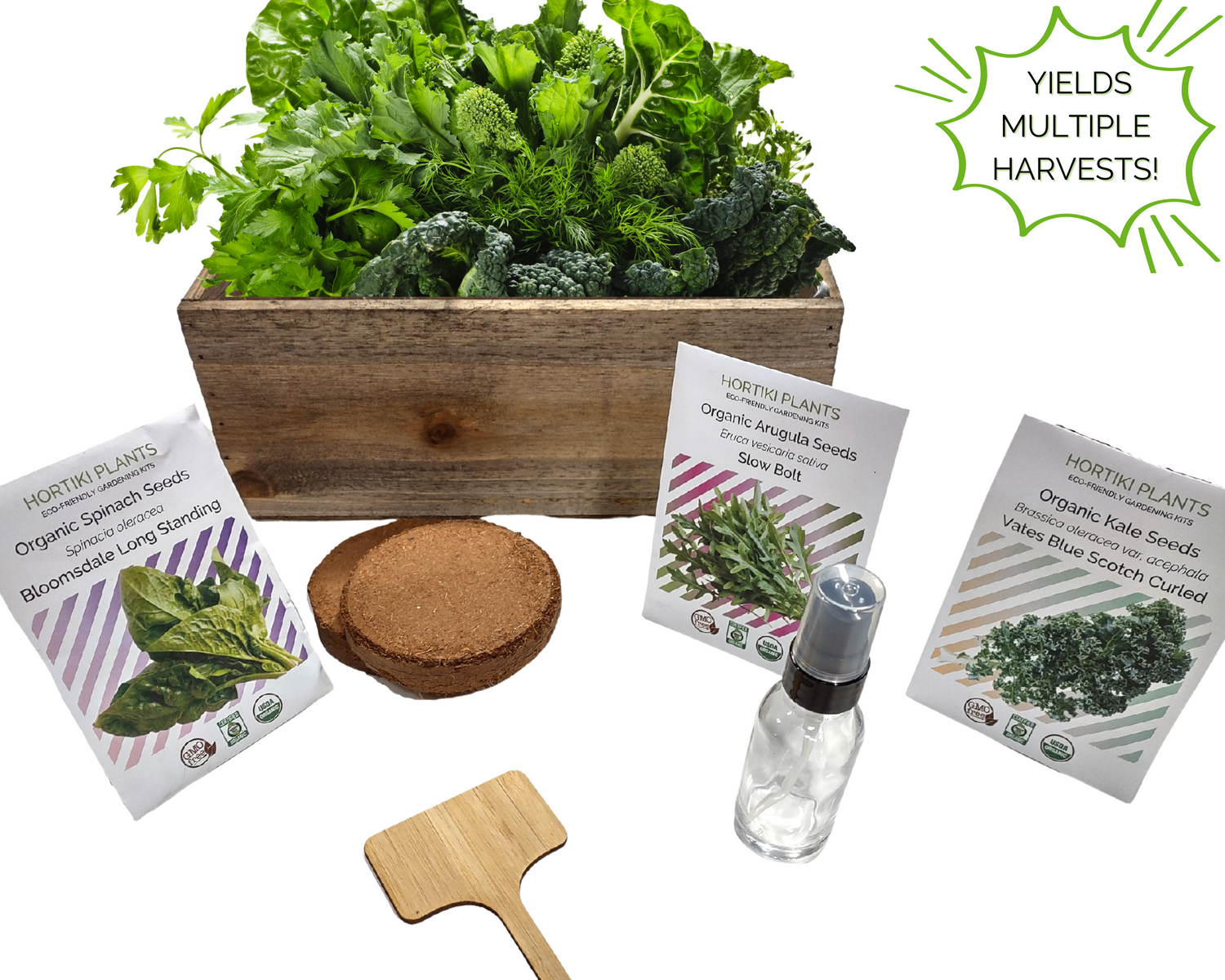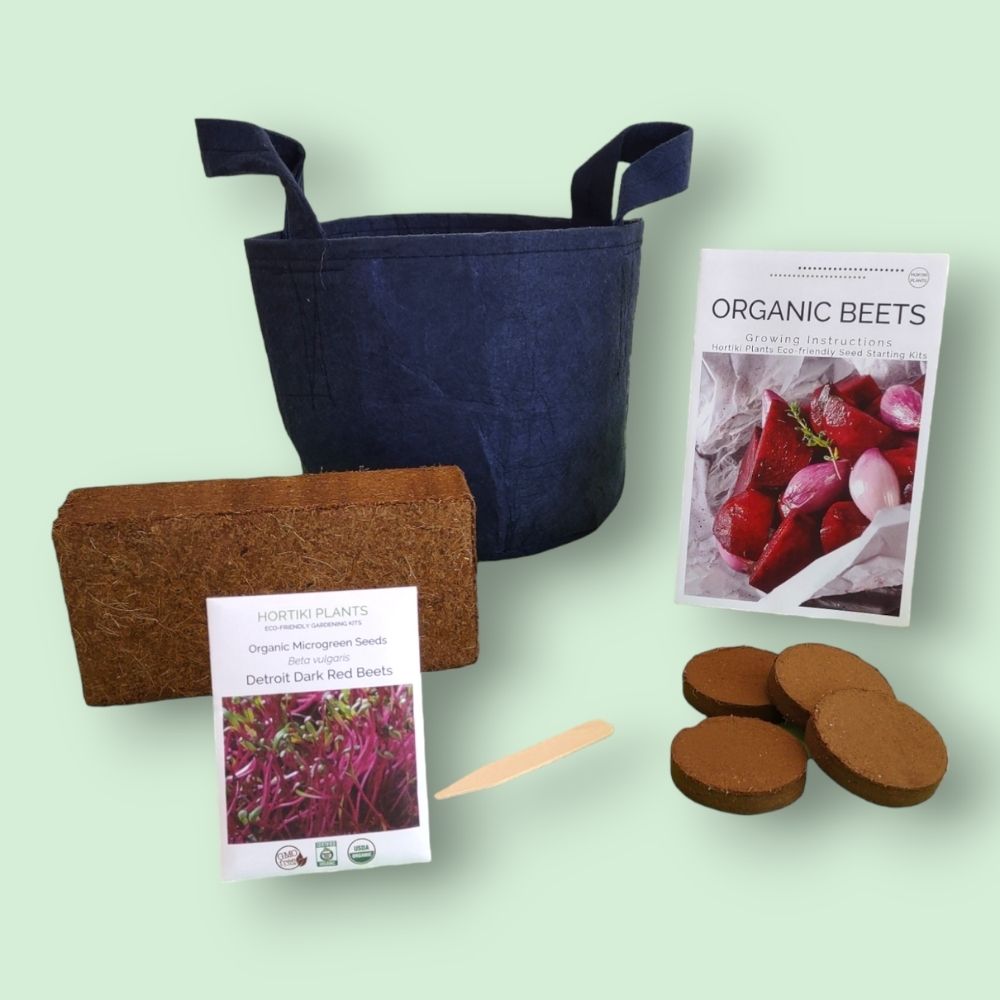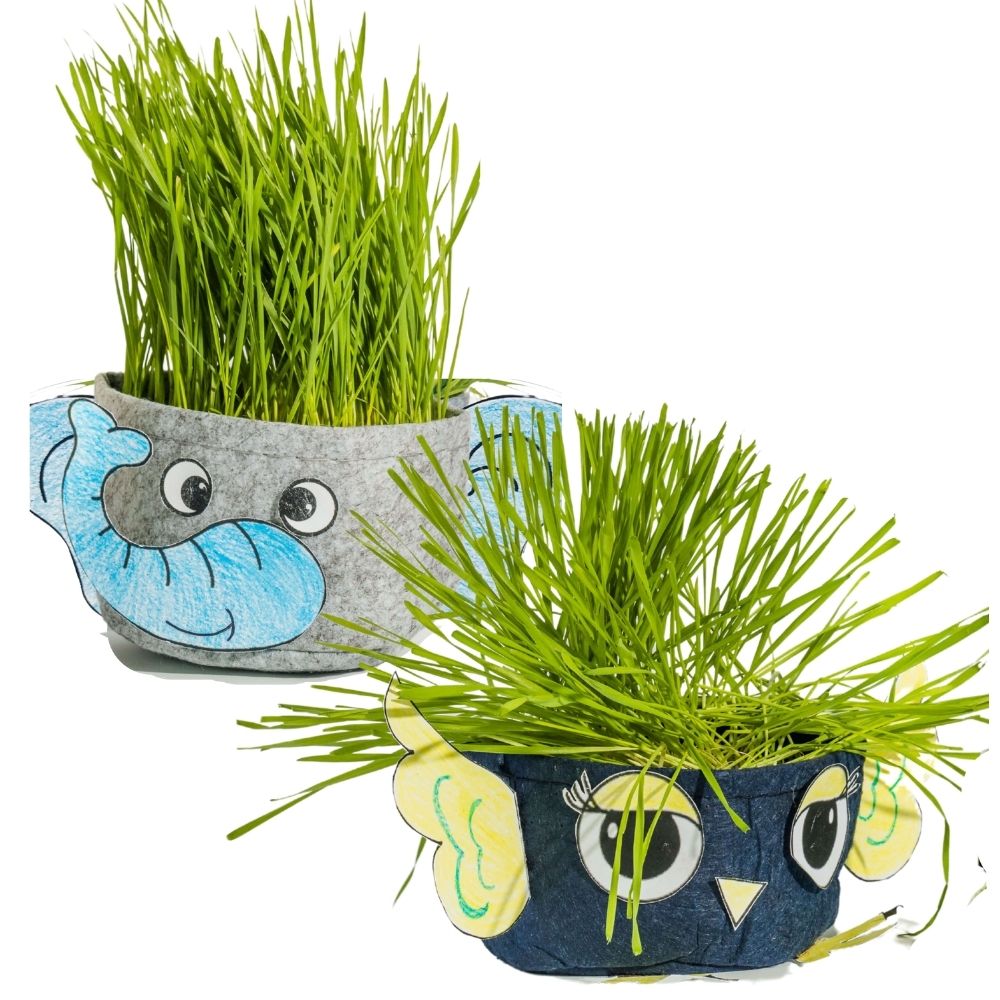
1. A Succulent Garden

To create a succulent garden:
- Choose a wooden, ceramic or metal container.
- Select a variety of succulents with different colors and shapes.
- Fill the container with well-draining soil.
- Plant the succulents, leaving enough space between them.
- Place the container in a sunny spot and water sparingly.
There are over 10,000 types of succulents in the world so you will have no trouble finding a varietyof plants to add to your garden. Here are a few suggestions to get you started.
- Echeveria: Offers rosette-shaped leaves in various colors.
- Sedum: Features fleshy leaves and comes in a wide range of shapes and colors.
- Crassula: Showcases thick, glossy leaves and sometimes produces colorful flowers.
- Aloe Vera: Known for its medicinal properties and distinctive spiky leaves.
- Haworthia: Displays intricate patterns on its leaves and prefers partial shade.
2. A Wildflower Garden
Follow these steps to create your own wildflower garden:
- Select a container with ample depth and drainage holes.
- Fill the container with a mixture of potting soil and compost.
- Choose a variety of wildflower seeds, considering their blooming seasons.
- Sprinkle the seeds evenly over the soil surface and gently press them in.
- Water the container regularly, keeping the soil moist until the seeds germinate.
- Once the wildflowers bloom, enjoy the explosion of colors in your garden.
Consider these five types of wildflowers for your container garden:
- Black-eyed Susan (Rudbeckia hirta): Features golden-yellow petals with a dark center.
- California Poppy (Eschscholzia californica): Showcases bright orange or yellow cup-shaped flowers.
- Cornflower (Centaurea cyanus): Displays beautiful blue, pink, or white blooms.
- Cosmos (Cosmos bipinnatus): Offers delicate flowers in various colors, such as pink, white, or purple.
- Indian Blanket (Gaillardia pulchella): Presents striking red and yellow daisy-like flowers.
3. A Herb Garden

Follow these steps to create your own:
- Select a container with sufficient space for your chosen herbs.
- Fill the container with well-draining soil mixed with compost.
- Choose your favorite herbs, such as oregano, rosemary, basil, curry leaf, or Thai basil.
- Plant the herbs in the container, giving them enough space to grow.
- Place the container in a sunny spot and water regularly.
Consider these five easy to grow herbs to start with:
- Basil (Ocimum basilicum): Provides a wonderful aroma and is available in various cultivars, such as Genovese or Thai basil.
- Mint (Mentha spp.): Offers refreshing flavors and comes in different varieties like peppermint or spearmint.
- Rosemary (Rosmarinus officinalis): Adds a delightful fragrance and is perfect for culinary uses.
- Parsley (Petroselinum crispum): Presents a vibrant green color and enhances the taste of dishes.
- Thyme (Thymus spp.): Delivers a distinct aroma and is available in different varieties like lemon thyme or common thyme.
4. A Butterfly Garden

Here's how you can create a butterfly-friendly container garden:
- Choose a container with sufficient space for multiple plants.
- Select plants that are attractive to butterflies, such as dandelions, daisies, and zinnias.
- Incorporate herbs and other plants that provide extra food sources for butterflies.
- Fill the container with well-draining soil.
- Plant the chosen flowers and herbs, ensuring they have enough room to grow.
- Place the container in a sunny location and water regularly.
Here are some of the best plants to attract butterflies to your garden:
- Butterfly Milkweed (Asclepias tuberosa): Features vibrant orange flowers and is a favorite of monarch butterflies.
- Purple Coneflower (Echinacea purpurea): Boasts eye-catching purple-pink petals and attracts various butterfly species.
- Lantana (Lantana camara): Offers clusters of colorful flowers that attract butterflies and hummingbirds.
- Verbena (Verbena bonariensis): Presents tall, slender stems topped with purple or pink blooms that butterflies adore.
- Joe-Pye Weed (Eupatorium purpureum): Showcases fluffy clusters of pinkish-purple flowers that butterflies find irresistible.
5. A Shade Garden
Here are some popular plants commonly found in shade gardens:
- Hosta (Hosta spp.): Known for its attractive foliage in various shades of green, blue, or variegated patterns.
- Ferns (Various genera): Offer lush, feathery foliage and thrive in shady conditions.
- Impatiens (Impatiens spp.): Present vibrant blooms in a range of colors, including pink, red, orange, or white.
- Heuchera (Heuchera spp.): Showcases colorful leaves, such as purple, burgundy, or silver, and sometimes produces delicate flowers.
- Coleus (Plectranthus scutellarioides): Provides a kaleidoscope of colorful foliage, perfect for adding visual interest to shady areas.
Also, don't forget about edible plants! Leafy greens like arugula, spinach, lettuce, and kale need less direct sunlight than plants that fruit and flower. Consider one of Hortiki's popular indoor garden kits such as the spinach garden kit pictured below to get started.
6. A Fruit and Vegetable Garden
Planting fruits and vegetables in containers is an excellent option for individuals who have limited space or lack a traditional garden. When planting fruits and vegetables in containers, there are a few key considerations to keep in mind. First, choose a container that is large enough to accommodate the specific plant's root system and growth habit. Ensure that the container has drainage holes to prevent waterlogging.
Selecting the right plants for container gardening is crucial. Opt for compact or dwarf varieties that are well-suited for container growth and have shorter maturity periods. Popular choices for container vegetable gardening include cherry tomatoes, peppers, herbs like basil and rosemary, lettuce, dwarf beans, and even compact varieties of cucumbers or zucchini.

Here are a few tips to ensure your fruits and vegetables will grow well:
- Select a container with sufficient depth for the root systems of your chosen plants.
- Fill the container with nutrient-rich potting soil.
- Choose fruits and vegetables that you will have enough light to grow. Fruiting plants will need the most light. Leafy greens and herbs can tolerate lower light spaces of your home or garden.
- If you start your plants from seed, consider starting your seeds indoors to protect them from extreme temperatures. Note, however that some plants don't grow well from seeds and it can also take longer. If you want to grow shrubs such as blueberries and raspberries, or fruit trees, get an already potted plant to start with. This will give you the highest chance of actually growing harvestable fruit from your plants.
7. A Cactus Garden

Here are five types to consider for your container garden:
- Golden Barrel Cactus (Echinocactus grusonii): Features round, ribbed stems with golden spines.
- Christmas Cactus (Schlumbergera spp.): Presents vibrant blooms in shades of red, pink, white, or purple.
- Moon Cactus (Gymnocalycium mihanovichii): Offers colorful, flattened stems in various shades like red, orange, or yellow.
- Pincushion Cactus (Mammillaria spp.): Displays globular stems covered in spines, often with colorful flowers.
- Zebra Cactus (Haworthia fasciata): Showcases striking white stripes on its fleshy, pointed leaves.
Ready to get started? Here are a few tips to ensure your cacti garden will thrive:
- Select a variety of colorful cacti with different shapes and sizes.
- Fill the container with cactus-specific potting mix.
- Plant the cacti, ensuring they have enough space to grow.
- Place the container in a sunny spot and water sparingly, following cactus care guidelines.
8. Annual Flowers
 Consider these five popular options:
Consider these five popular options:
- Geraniums (Pelargonium spp.): Offer clusters of vibrant flowers in various colors like red, pink, or white.
- Marigolds (Tagetes spp.): Present bold, cheerful blooms in shades of yellow, orange, or maroon.
- Petunias (Petunia spp.): Deliver a wide array of colors and patterns, including solid, striped, or bi-colored flowers.
- Nasturtiums (Tropaeolum spp.): Showcase edible flowers in shades of red, orange, or yellow, with lily pad-like leaves.
- Begonias (Begonia spp.): Provide showy flowers and come in various types like wax begonias or tuberous begonias.
9. A Japanese Garden

Here are a few tips to help you get started:
- Choose a container that complements the Japanese aesthetic, such as a ceramic or wooden planter.
- Incorporate elements like bamboo, rocks, moss, and a water feature.
- Arrange the elements harmoniously, creating a sense of balance and simplicity.
Here are five elements to include in your Japanese container garden:
- Japanese Maple (Acer palmatum): Offers delicate, lacy foliage in stunning shades of red, orange, or green.
- Dwarf Bamboo (Bambusa spp.): Provides a vertical element with its elegant and slender culms.
- Japanese Forest Grass (Hakonechloa spp.): Presents cascading, arching leaves in vibrant shades of green or gold.
- Moss (Various genera): Adds a lush and velvety ground cover, creating a traditional Japanese garden feel.
- Water Feature (e.g., Bamboo Water Fountain): Incorporates the soothing sound of water, enhancing the tranquil ambiance.
10. A Tropical Garden

Follow these steps to create your own tropical container garden:
- Select a container with sufficient space for lush tropical plants.
- Choose plants like hibiscus, palm trees, ferns, or other tropical varieties.
- Fill the container with well-draining potting soil.
- Arrange the plants, considering their sizes and textures.
- Add pieces of driftwood to enhance the natural feel of the garden.
- Place the container in a sunny location and water accordingly to the plant's needs.
Consider these five tropical plants for your container garden:
- Hibiscus (Hibiscus rosa-sinensis): Presents large, colorful blooms in various shades, such as red, pink, orange, or yellow.
- Bird of Paradise (Strelitzia reginae): Showcases unique, bird-like flowers with vibrant orange and blue hues.
- Elephant Ear (Colocasia spp.): Offers oversized, heart-shaped leaves in shades of green or purple.
- Palms (Various genera): Choose dwarf varieties like Areca palm or Parlor palm that thrive in containers.
- Ferns (Various genera): Provide lush, feathery foliage and thrive in the humid conditions of a tropical garden.
No matter what type of garden you decide to create, container gardens are a great way to bring life and color to your small space. Now that you know 10 unique container gardens you can create in May, you can start planning your dream garden!



